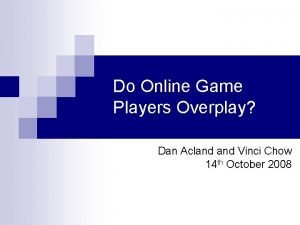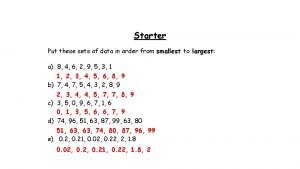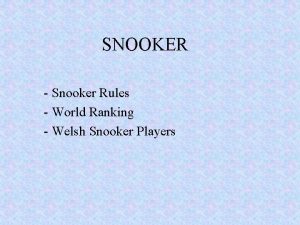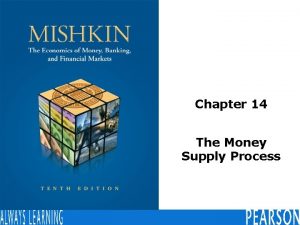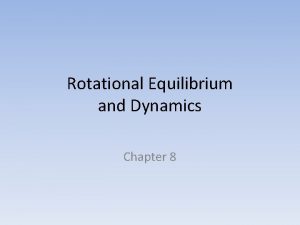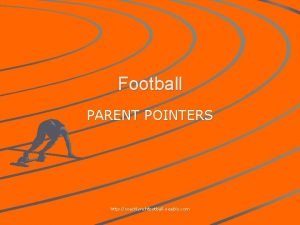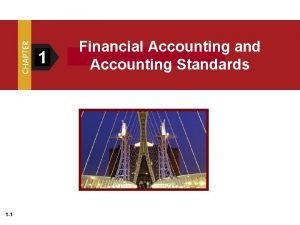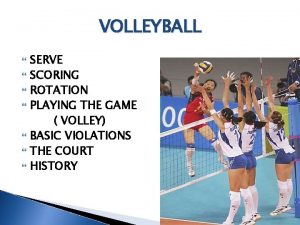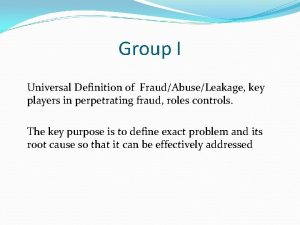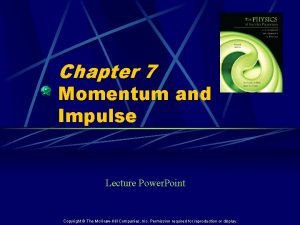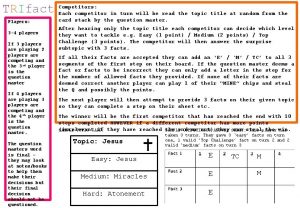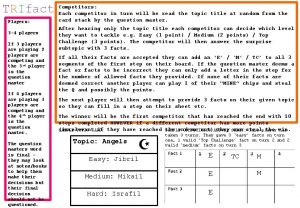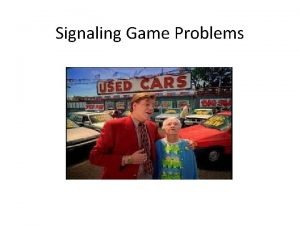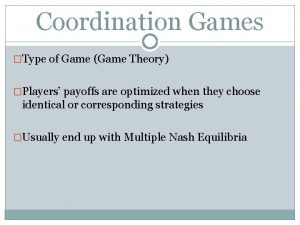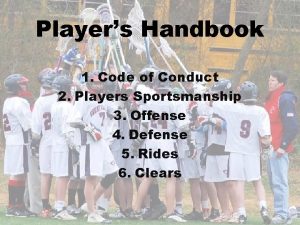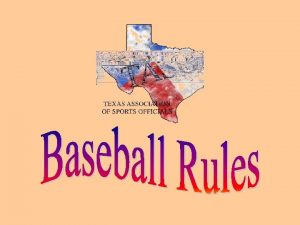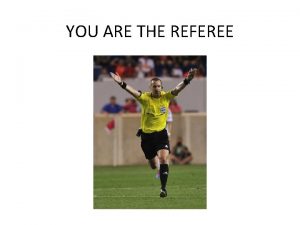Do Online Game Players Overplay Dan Acland Vinci




































- Slides: 36

Do Online Game Players Overplay? Dan Acland Vinci Chow 14 th October 2008

Motivation n Internet/Video Game overplaying is an increasing concern American Time Use Survey 2006—Age 15 -19 spend one hour per day on average on computer/video games ¨ Government sponsored survey in South Korean— 2. 4% of the 9 -39 population are addicted to internet (Business. Week) ¨ n Little experimental evidence in the field of economics on utilization of self-control devices Psychiatric experiments on alcoholics ¨ Psychology studies on game addiction ¨ n Online game provides a unique platform to administer and monitor experiment to large number of subjects in a natural setting, at low cost

Our Project n Field experiment utilizes a multiplayer online game platform n Offers actual players different commitment devices ¨ Use of commitment devices suggests existence of self-control problems ¨ Two types of devices in which present-bias players and cuesensitive players would utilize in different ways.

Model n A stylized discrete time model ¨ n Combine features of Quasi-Hyperbolic Discounting (Laibson 1997) and cue theory (Bernheim and Rengel 2004) Timeline Period 0 Period 1 Period 2 Period 3 Period 4 Computer On/Off Play or Not Play Incur Delayed Cost

Model n Period 0 ¨ Turn Computer On n ¨ Allows subsequent playing in Period 1 to 3 Computer Off n No subsequent playing allowed. n Utility function n Time consistent regardless of β Our measurement of welfare n

Model n Period 1, 2 and 3 ¨ Play n ¨ Not Play n n Instantaneous consumption x and incur delayed cost no consumption, no cost Utility function where xτ is consumption from playing in Period τ C is total cost of playing n Time-inconsistent if β < 1

Model n x is random and take on two values n Realization of x observed by player before playing decision in Period 1 ¨ n No incentive to play just to observe x Increasing marginal cost where Cτ is the total cost of playing in two periods. Interpretation—delaying other activities is increasingly costly

Model n Cue-Triggered Mistakes ¨ In each Period t, probability pt of entering a “hot” mode n ¨ play in Period t with certainty Probability 1 - pt of staying in “cold” mode n Chooses optimally whether to play or not ¨ ¨ “Hot” mode lasts for one period n If assume instead “hot” mode lasts forever, lower incentive to start playing and higher incentive to delay playing

Model n Allow misprediction in β and p n We assume that x, C and p satisfy ¨ Period 0 self would want to play in two periods when x = x. H. Furthermore there is no time-inconsistency problem ¨ Period 0 self would want to play in one period when x = x. L, but a time-inconsistency player will play for at least another period ¨ Positive chance of being cued in every period

Behavior Without Commitment Device n To avoid self-control problem the player might decide not to allow herself to play any games, even if a positive amount of playing is desirable n The player allows herself to overplay when it gives higher utility than not playing at all

Commitment Devices n Ex-ante Device X ¨ n At Period 0, the player can commit to blocking herself from playing further once she has played a certain number of games. In-game Device I ¨ ¨ At each period, the player can commit to blocking herself from playing further after one additional game. Cannot be initiated in a period where the player is in “hot” mode

Commitment Devices n New timeline

Effects of Devices on Game Play We expect treatment group to have n Fewer games per session n Weakly more sessions per time period n Effect on total number of games ambiguous

Prediction of the Model Two questions, n How do self-control devices affect game play? n Would time-inconsistent players and cuesensitive players respond differently to different devices?

Behavior with Commitment Devices n Time-consistent/β-naiveté, cue insensitive/p-naiveté ¨ n Use nothing β-sophisticate, cue-insensitive/p-naiveté Uses I in the period before overplay is expected ¨ If only B is offered, always use it if the cost of overplaying is higher than the expected consumption from overplaying ¨ Use I only when offered both ¨ n p-sophisticate Always uses X ¨ Random use of I if it is offered (never use if p = 1) ¨

Crucial Assumptions n No habit formation between sessions n p and x are not affected by the availability of devices n Block length is less than time between sessions

Pilot Experiment n Our attempt to the two questions mentioned How do self-control devices affect game play? ¨ Estimate the proportion of time-inconsistent players and cuesensitive players—not yet done ¨ n An online implementation of the board game Boggle ¨ n compete on finding the highest number of English vocabulary words from a grid of letters within time limit Approximately 10, 000 regular players

Execution n Six treatments groups— 100 subjects each n Each group consists of 50 “heavy” players and 50 “normal” players, “heavy” being defined as playing over 10 games in each session on average. n One control group— 600 subjects n Each treatment group received the device(s) in one of the six possible orders ¨ ¨ ¨ n Group 1 – B, I, X Group 2 – B, X, I Group 3 – I, B, X Group 4 – I, X, B Group 5 – X, I, B Group 6 – X, B, I Each group received the same device(s) for one month at a time


Ex-Ante Device


In-game Device


In-game Device

Limit Reach

Some Statistics Time Period Covered Total Observations -Collapsed to Player-Day No. of Players -In treatment -In Control Within Treatment Days Played Games Per Day Sessions Per Day Avg. Games Per Session Avg. Correct Guess Ratio Avg. Rank Avg. Break Duration (in days) N Pre-Treatment 4/8 - 6/7 Treatment 6/8 -9/7 32879 49588 507 520 329 353 Used 21. 43 (16. 02) 16. 75 (11. 76) 1. 90 (1. 00) 9. 66 (0. 13) 0. 65 (0. 13) 0. 44 (0. 20) 6. 22 (14. 30) No Use 9. 81 (13. 21) 13. 68 (12. 02) 1. 71 (1. 02) 8. 28 (6. 10) 0. 66 (0. 14) 0. 33 (0. 21) 7. 98 (16. 89) 119 388 Used 27. 47 (23. 86) 11. 77 (7. 54) 1. 75 (0. 93) 7. 32 (4. 47) 0. 65 (0. 13) 0. 45 (0. 20) 8. 45 (17. 68) No Use 17. 44 (22. 98) 9. 82 (9. 54) 1. 70 (1. 20) 5. 75 (4. 21) 0. 67 (0. 15) 0. 38 (0. 23) 17. 10 (24. 51) 121 208

n Take-up Rate Take up Rate ¨ At least once: ¨ At least thrice: 129 50 (38. 97%) (15. 11%) swap 1 swap 2

Effect of Treatment

Effect of Treatment

Regressions n n Fixed-Effect Regressions at player-day level Instead of player dummies we use player-day-of-week dummies because players mostly play in the same day every week. Treat. Group x Treat. Period Constant Games Per Day Sessions Per Day Games Per Session -0. 80 -0. 05 -0. 49 (0. 42) (0. 05) (0. 18) 17. 37 ** 2. 27 ** 8. 84 (0. 24) (0. 03) (0. 11) Month Dummies Yes Yes Yes Player-Day-of-Week Clustering Yes Yes F 24. 30 0. 66 38. 56 N 27654 ** Significant at 1% * Significant at 5% 27654 ** ** 26492

Regressions n Does the devices have effect on players who chose not to use the devices? Used Device x Treat. Period at least once Treat. Group x Treat. Period Constant Games Per Day Sessions Per Day Games Per Session -0. 01 -0. 78 (0. 66) (0. 08) (0. 28) 0. 03 -0. 04 -0. 12 (0. 48) (0. 06) (0. 20) -1. 73 ** 17. 38 ** 2. 27 ** 8. 84 (0. 24) (0. 03) (0. 11) Month Dummies Yes Yes Yes Player-Day-of-Week Clustering Yes Yes F 21. 00 0. 58 33. 21 N 27654 ** Significant at 1% * Significant at 5% 27654 ** ** 26492

Is the Block Binding? n Most subjects who used a device do not log back in right after the block ends Block duration: 60 min ¨ Average duration between sessions in treatment period ¨ n n Mean: Median: 1 percentile: 20910. 88 min 5854. 813 min 363. 767 min = 14. 52 days = 4. 07 days = 6. 06 hours What does it mean for those who do? ID Time when Device was set Games Allowed Time when Forced to Log Off Time when Log In Possible Again 0 XG 3 X 14: 55: 46 4 15: 11: 30 16: 11: 30 0 XG 3 X 16: 39: 02 4 16: 56: 30 17: 56: 30 0 XG 3 X 18: 20: 11 3 18: 34: 00 19: 34: 00 0 XG 3 X 19: 48: 32 4 20: 04: 00 21: 04: 00 0 XG 3 X 21: 12: 06 4 21: 30: 15

Regressions n Do different devices have different effects? Both Device Available In-game Device Available Ex-ante Device Available Constant Month Dummies Player-Day-of-Week Clustering F N Games Per Day Sessions Per Day Games Per Session 0. 26 (0. 49) -1. 70 ** (0. 46) -0. 95 * (0. 47) 14. 29 ** (0. 44) 0. 04 (0. 06) -0. 11 * (0. 05) -0. 08 (0. 06) 2. 28 ** (0. 07) -0. 29 (0. 22) -0. 56 ** (0. 20) -0. 61 ** (0. 19) 7. 18 ** (0. 19) Yes Yes 21. 83 27654 Yes Yes 1. 92 27654 Yes Yes 29. 59 26492 ** Significant at 1% * Significant at 5%

Normal and Heavy Players n Regression coefficients cannot be applied to the population directly because we oversampled heavy players ¨ n Heavy players had a higher up-take rate ¨ n Used once— 49. 38% versus 35. 6% There also a lot fewer of them playing by the time of the treatment period ¨ n Will be running weighted regressions later on 81/300 versus 250/300 Have not looked into whethere is a difference in the effect of the devices yet

The Next Experiment n The loss in subjects throughout time was higher than we anticipated. The next experiment would need to start with a larger number of subjects n More flexible devices ¨ n n-more-game button? Investigate if a simple reminder on the possibility of overplay has any effect on game play

Further Research n Replicating the pilot on games that are commercial and more timeconsuming ¨ n Word of Warcraft or MSN messenger? Proxy for cues with gaming environment? A hard or an easy board ¨ Competing against good players ¨ n Investigate the effect self-control devices have on demand for games Effect could go either way ¨ Administrating the devices to new players only in order to study such effects? ¨ n Whether self-control is a problem in working environments, and whether self -control devices can mitigate that
 Dan acland
Dan acland Leonardo da vinci was born on april 15
Leonardo da vinci was born on april 15 Deposorios
Deposorios Leonardo da vinci was born on april 15 1452 in vinci italy
Leonardo da vinci was born on april 15 1452 in vinci italy Embouchure for trumpet
Embouchure for trumpet Irish american baseball players
Irish american baseball players Colin took a sample of 80 football players
Colin took a sample of 80 football players Snooker rules
Snooker rules The major key players on the international side are the:
The major key players on the international side are the: The evolution of music players
The evolution of music players Key players in tourism industry
Key players in tourism industry Key players in cruise industry
Key players in cruise industry The three players in the money supply process
The three players in the money supply process Agility in tennis
Agility in tennis Lorenzo neal wrestling
Lorenzo neal wrestling Team vs working group
Team vs working group Cambodian instrument with two big drums similar to japanese
Cambodian instrument with two big drums similar to japanese A basketball is being pushed by two players
A basketball is being pushed by two players Basketball is a noun
Basketball is a noun Nau hockey team
Nau hockey team Football players that wrestled
Football players that wrestled Two types of main idea
Two types of main idea Opening knight players
Opening knight players Tripartite system in malaysia
Tripartite system in malaysia Players weebly
Players weebly The major key players on the international side are the
The major key players on the international side are the Periodic table of soccer players
Periodic table of soccer players The major key players on the international side are the:
The major key players on the international side are the: History of volleyball
History of volleyball Mtf
Mtf Key players definition
Key players definition Two football players collide and stick together
Two football players collide and stick together Players in volleyball team
Players in volleyball team The major key players on the international side are the
The major key players on the international side are the We real cool audio
We real cool audio Baddeley and hitch rugby players
Baddeley and hitch rugby players Danna nelson still alive
Danna nelson still alive
